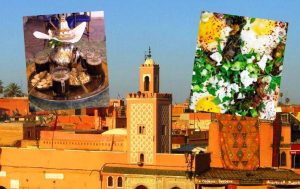Unmistakable geometric shapes and colours characterize the dress and lifestyle of this Zulu-based group established in South Africa. A tradition that resists, as do their initiation rites, for example. Even if in everyday life it is the Western style that has taken over.
The Ndebele are originally from southern Zimbabwe, from where they left, breaking away from the Zulus, to reach “KwaNdebele”, the land of the Ndebele. It is in this region, in the middle of the endless veld of the Transvaal, in north-eastern South Africa, that even today it is possible to admire the incredible kaleidoscope of shapes and colours of the typical homes of this people, whose walls are painted in strong colours, with geometric lines that represent an almost unique example in African art.
Like most groups in southern Africa, the social structure of the Ndebele is based on age classes, with transitions marked by initiation rites. The most intense moment is circumcision, which boys undergo to be admitted into the adult community.
Before circumcision a boy is not united with his soul: he is not yet a real human being. Therefore, he is free to do what he likes, without being subject to precise rules of behaviour. His clothing reflects this freedom: young people can dress however they like. After circumcision, the community expects them to behave more in keeping with adulthood.
Seen from above, an Ndebele village looks like a desperate attempt to break up the chromatic monotony of the veld. Colour is the strongest and most striking element of the Ndebele universe. Women generally wear colourful clothes and picturesque ornaments which, in addition to being an element of beauty, indicate status.
The unmarried women wear curious aprons of coloured beads and numerous copper or iron rings on their legs which make the entire costume more fascinating. Women’s dresses become even more spectacular after marriage. The apron is replaced by another larger one, with a rectangular insert from which fringes of coloured beads hang. Married women usually cover their breasts with a heavy blanket over their shoulders.
Around her neck, a recently married woman wears the rholwami, a large thick ring of beads and woven fibres. It indicates that the woman is married but her husband has not yet built her a house. When this is finished, the woman throws away her rholwami and replaces it with copper or brass rings. The number of rings worn indicates the wealth of the family.
Even the headdresses express the passion and taste for colours. Coloured beads and fibres are intertwined to form hats with the most bizarre shapes. If you meet a woman with two floor-length coloured bands hanging from her head, she is a mother whose child is about to be initiated into adulthood. These costumes now appear only on the occasion of traditional ceremonies and gatherings. In everyday life, they mostly wear Western-style clothes, just as their way of life is now based on the Western style.
Tireless artists, the women reproduce on the walls of their homes the brilliant and lively designs that embellish their clothes. Decorating houses is an exclusively female activity. Here too, age marks the moment in which you can start practising mural art. In fact, it is at puberty that a girl is admitted into the group of decorators. In the past, colours of natural origin were used – clay, coal, cow dung – spread on both the external and internal walls of homes. At the beginning of the last century, white traders enriched the colour spectrum of the Ndebele by bringing new colours such as blue and green. (Marco Aime/Africa) – (file swm)







